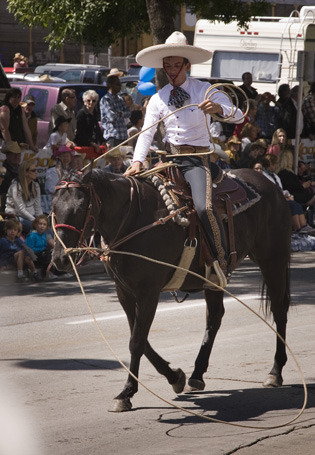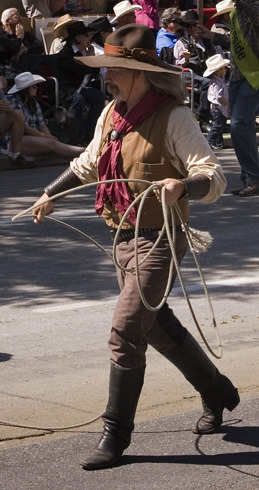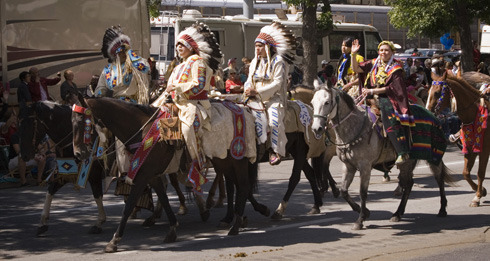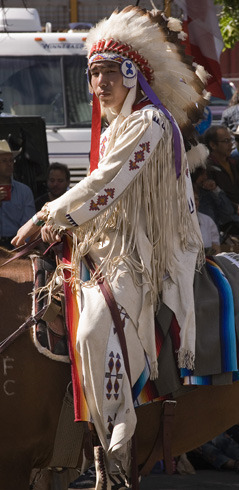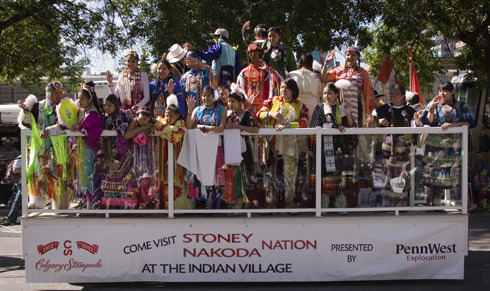Calgary Stampede – Part 1 Guest post by Cathy R
The first Calgary Stampede was held in 1912, staged as an event to honour authentic western life. The Centennial Stampede was part of my birthday trip to Canada in July. It was something I was particularly looking forward to, and excited about, and the two days of the Stampede more than lived up to expectations.
We started by getting up early to get a good position to watch the parade, the official Stampede kickoff. Months earlier, we’d booked bleacher seating provided by the Calgary West Rotary Club, who also provided breakfast. Arriving at 6.30am, we chose our places on the top row of seats (after much dithering about the best place to sit for taking photos), and headed off to breakfast. This was much more than we expected! Rows of trestle tables set out in a nearby car park, with live music, and a huge, freshly prepared breakfast. Pancakes with cream and blueberries, potato cakes, beans, and the inevitable muffins. The atmosphere was fantastic, everyone was out to enjoy themselves, and it was a wonderful start to the Stampede.

Fresh pancakes - with blueberries and cream.
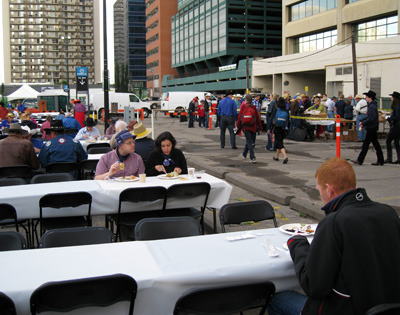
Stampede breakfast.
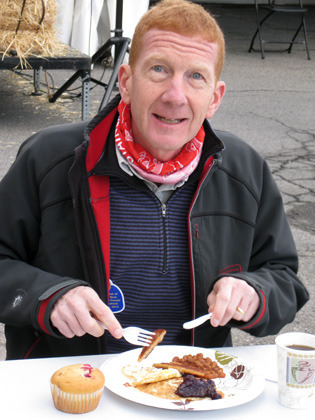
Tucking in - parade watching is hungry work.
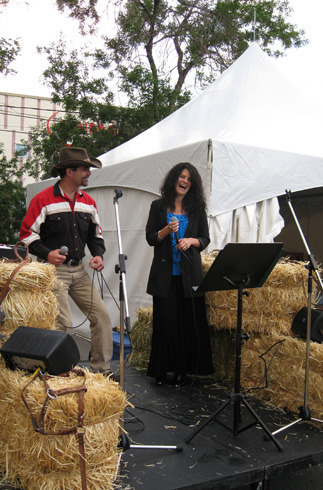
Live entertainment at breakfast.
Breakfast over, we resumed our seats, and the Parade began. Marching bands from as far afield as Australia, Taiwan, Columbia, Denmark and Germany, representatives of five Treaty 7 First Nations*, and many different groups of horses and riders. It took nearly three hours to go past, and we were thankful indeed for the padded mats we’d bought to sit on.
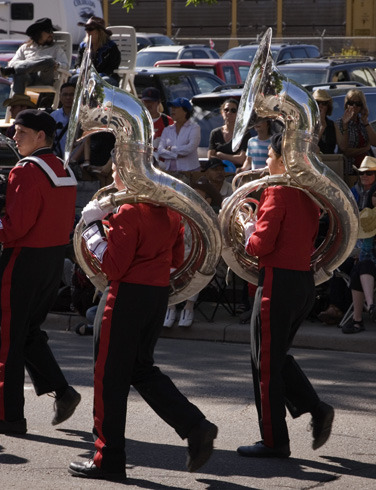
I have no idea what these instruments are!
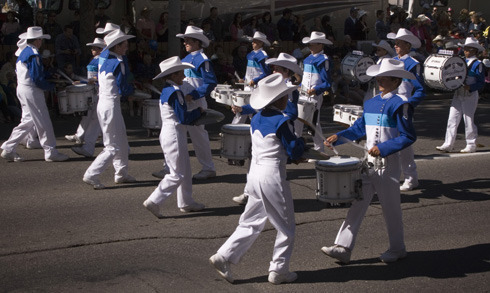
I felt sorry for the poor lads who had to walk backwards the whole way!
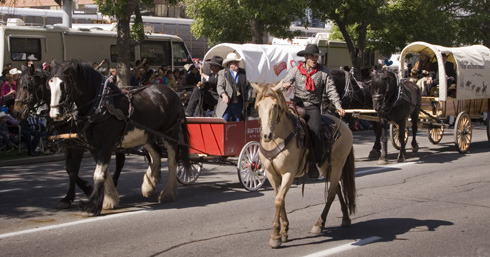
Chuckwagons
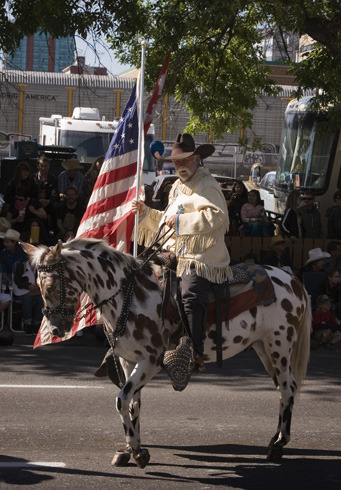
The Calgary Regional Appaloosa Club. What strikingly beautiful horses these are.
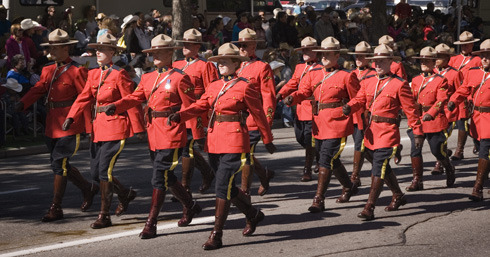
The Marching Troop of the Mounties (Royal Canadian Mounted Police)
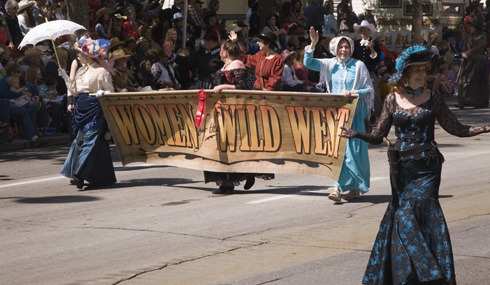
Women of the Wild West - women who Do Stuff!
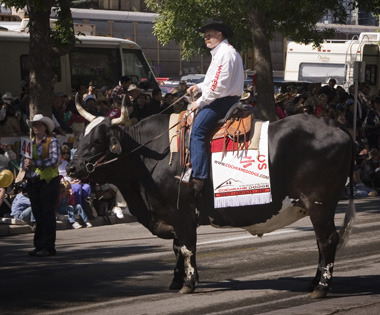
Wild West Willie!
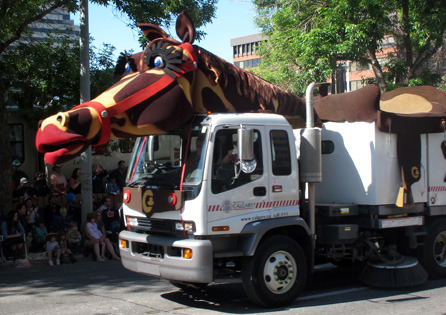
The Pooper-Scooper truck!
Also part of the Stampede is the Indian Village, where families from each of the Treaty 7 First Nations camp during the Stampede. Each painted tipi has a unique design, sometimes hundreds of years old. The designs originate from dreams, visions after prolonged fasting, and accomplishments, and are believed to protect the owners from sickness and misfortune. In general, the design of a tipi can be broken into three sections. The top section represents Father Heavens, the middle represents the spirit world, and the bottom represents Mother Earth.
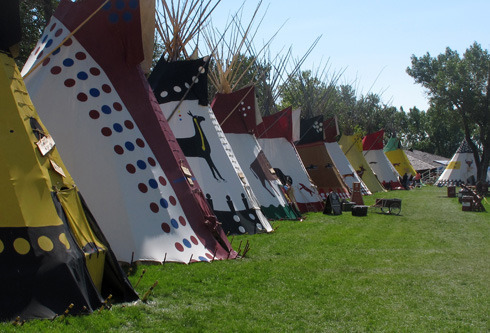
Rows of tipis with their unique designs. In the top section, white circles on a dark background represent stars.
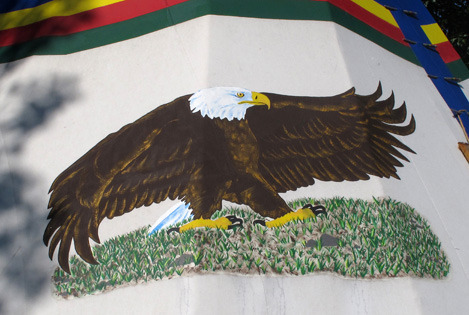
The middle section represents spiritual animals connected to the owner of the tipi design.
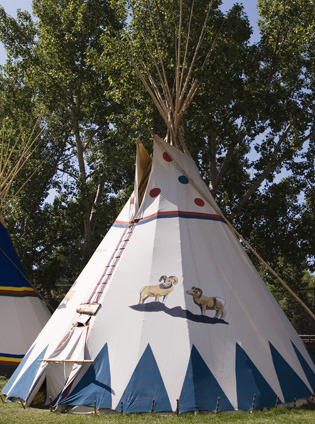
A triangular design in the bottom part of the tipi can represent mountains.
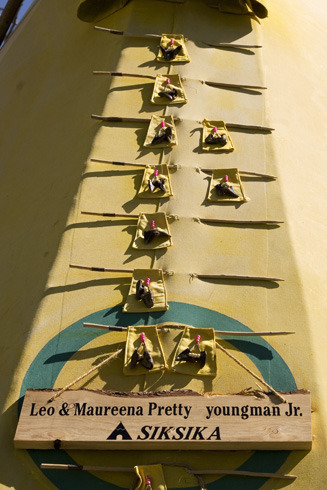
Ornamentation and design over the entrance to each tipi.
In parts 2 and 3 of these Stampede posts – the rodeo, the chuckwagon races, and other fun cowboy stuff!
* * *
* Tsuu T’ina, Piikani, Stoney, Kainai and Siksika. These First Nations signed Treaty 7 in 1877, and have been part of the Stampede since its inception in 1912. https://en.wikipedia.org/wiki/Treaty_7
Robin McKinley's Blog
- Robin McKinley's profile
- 7240 followers



